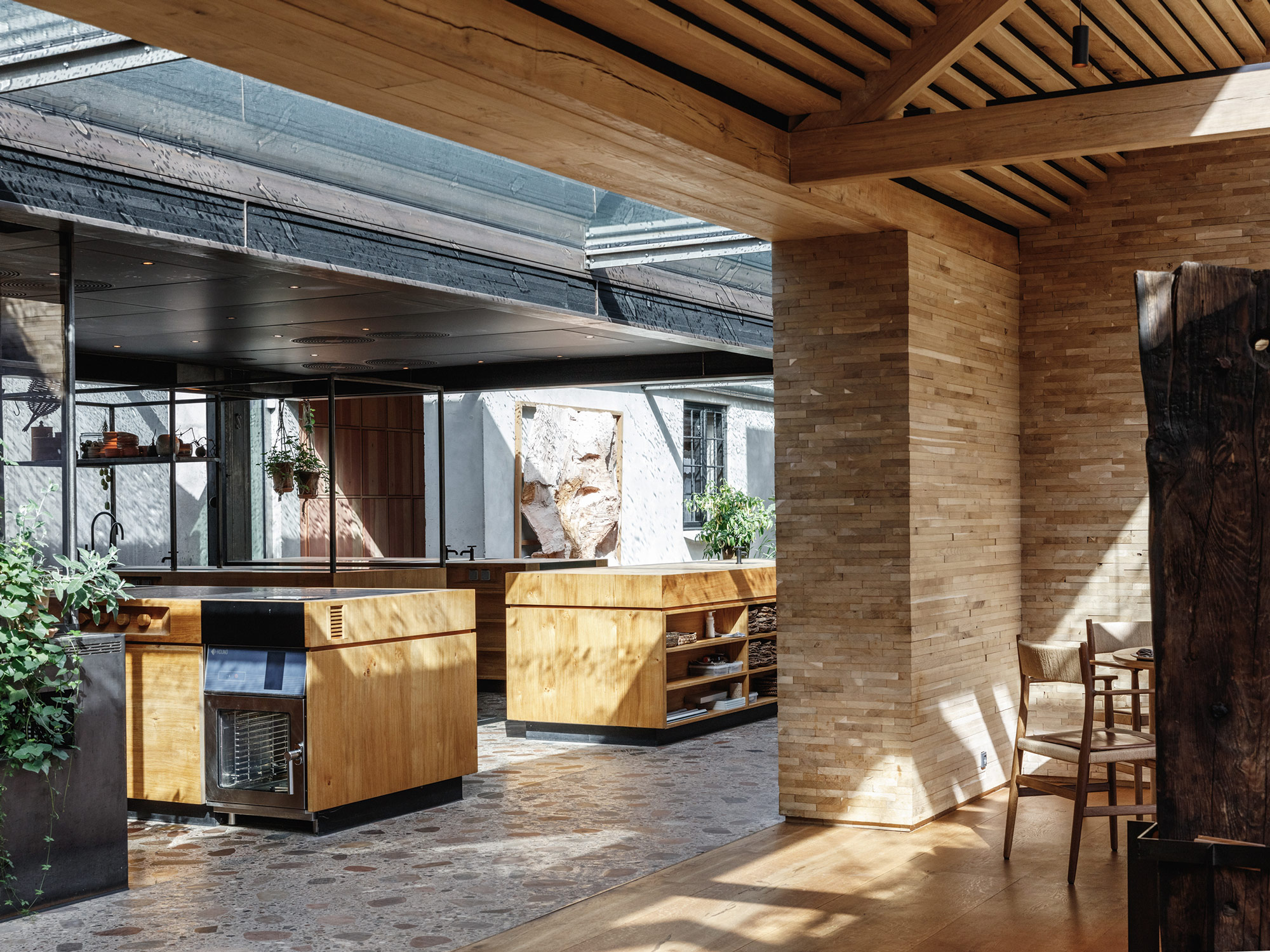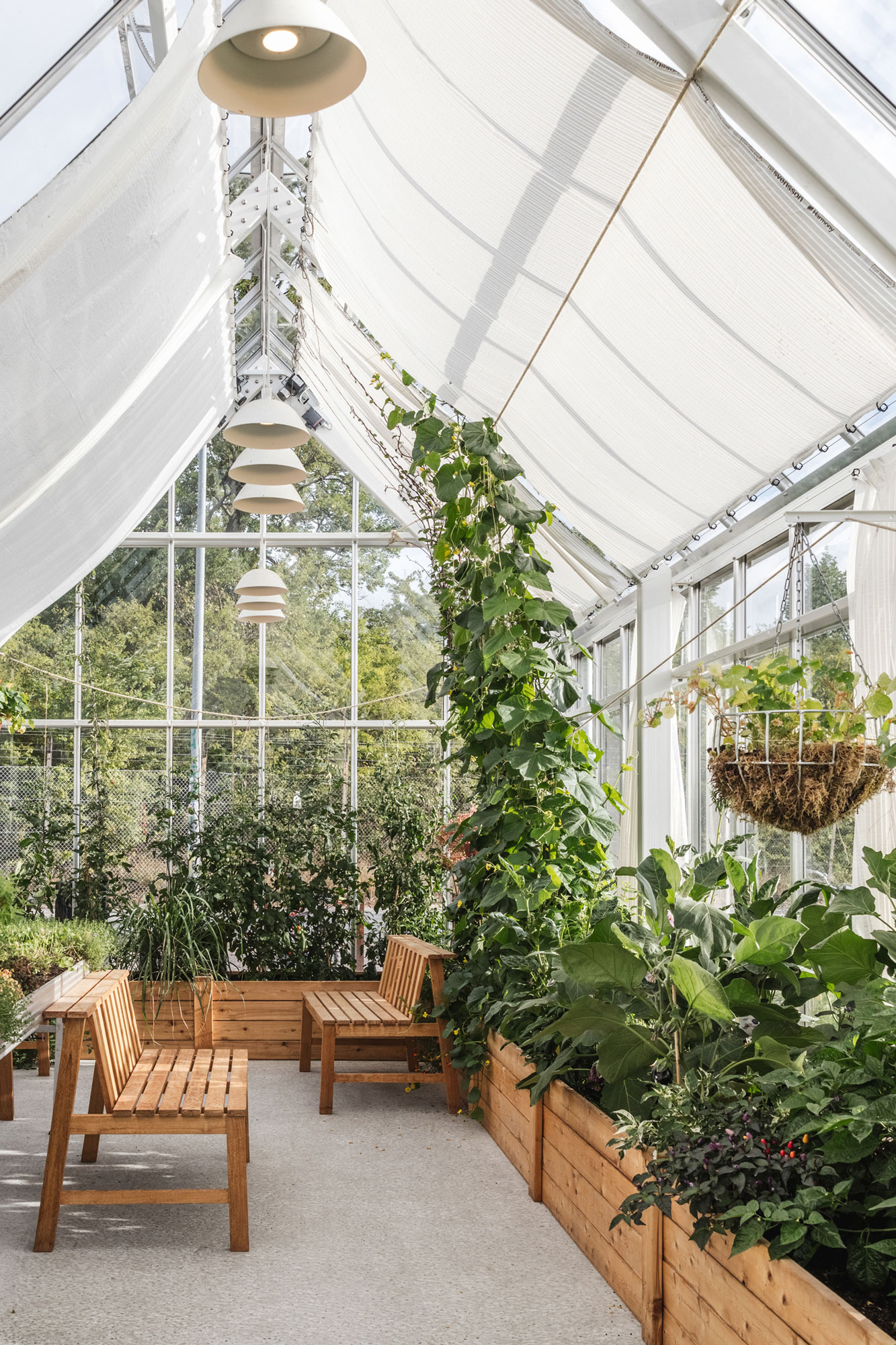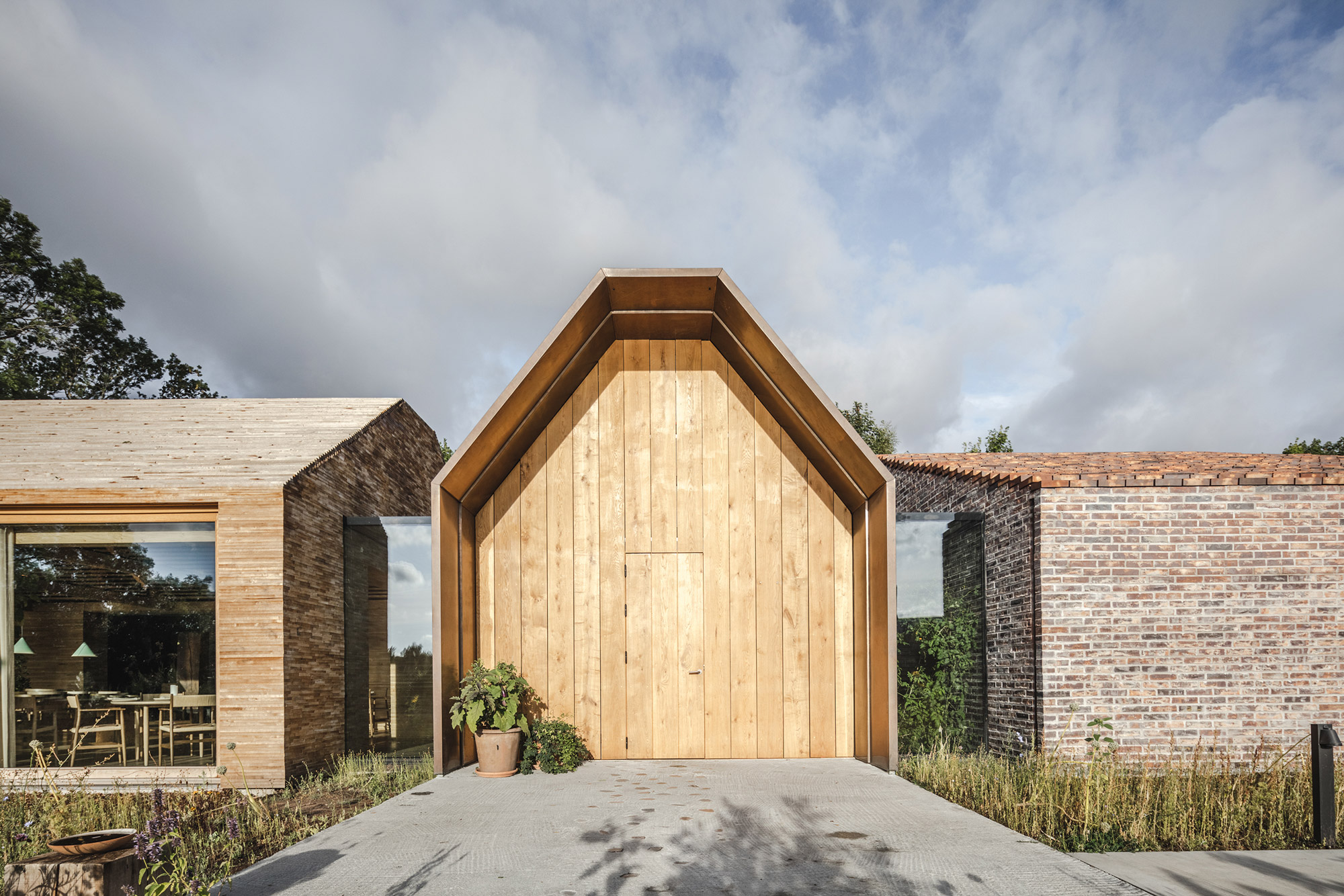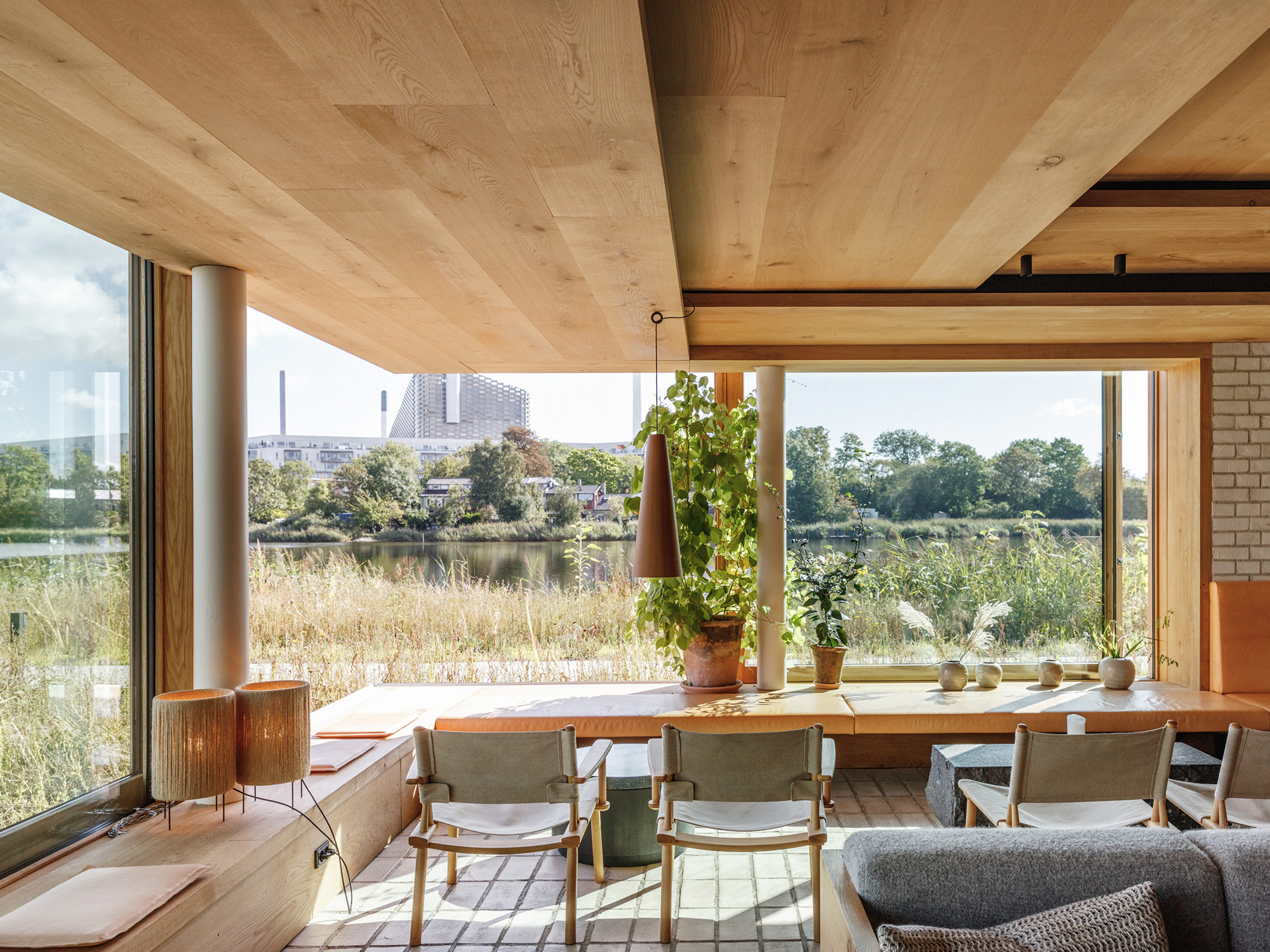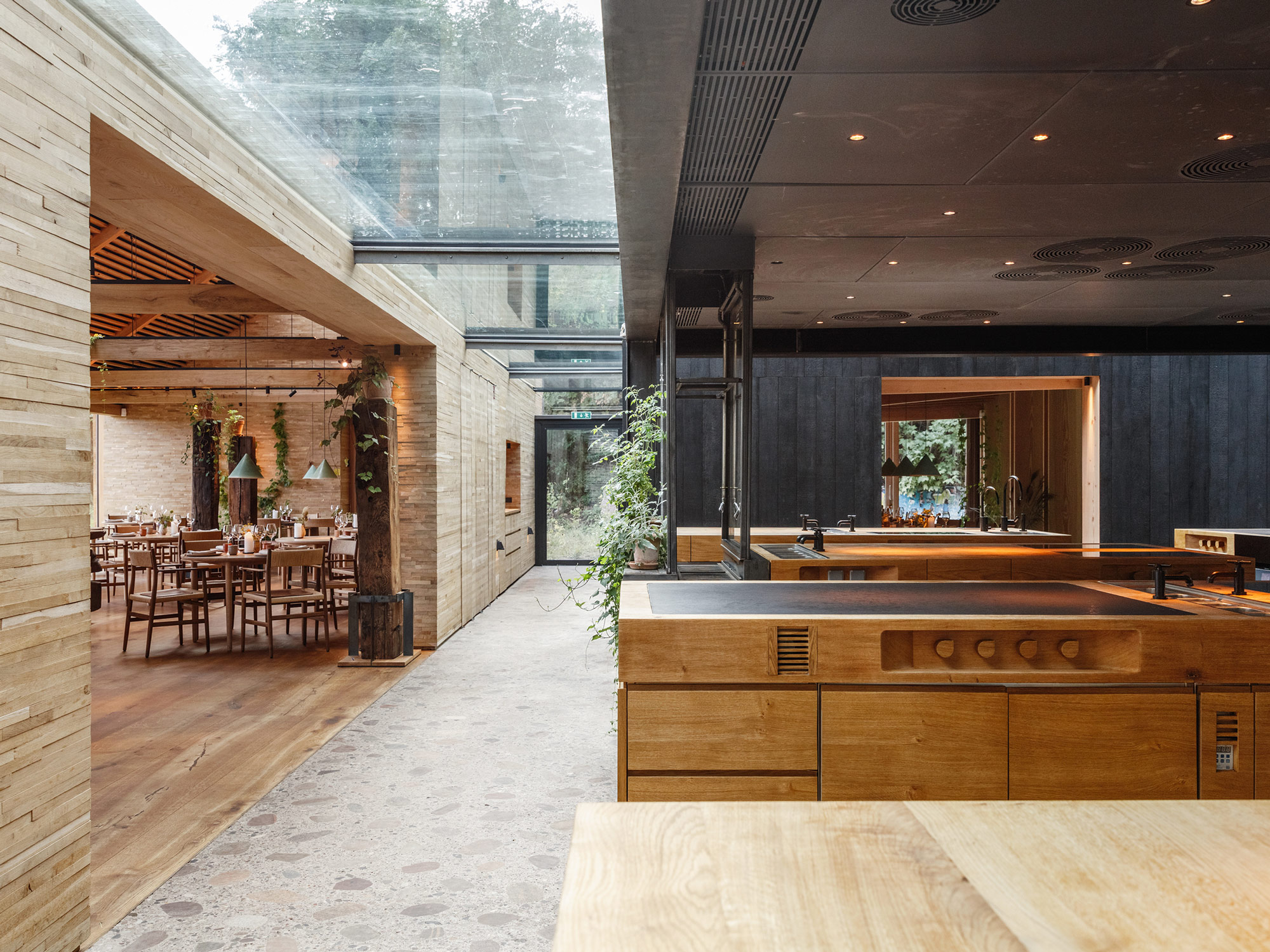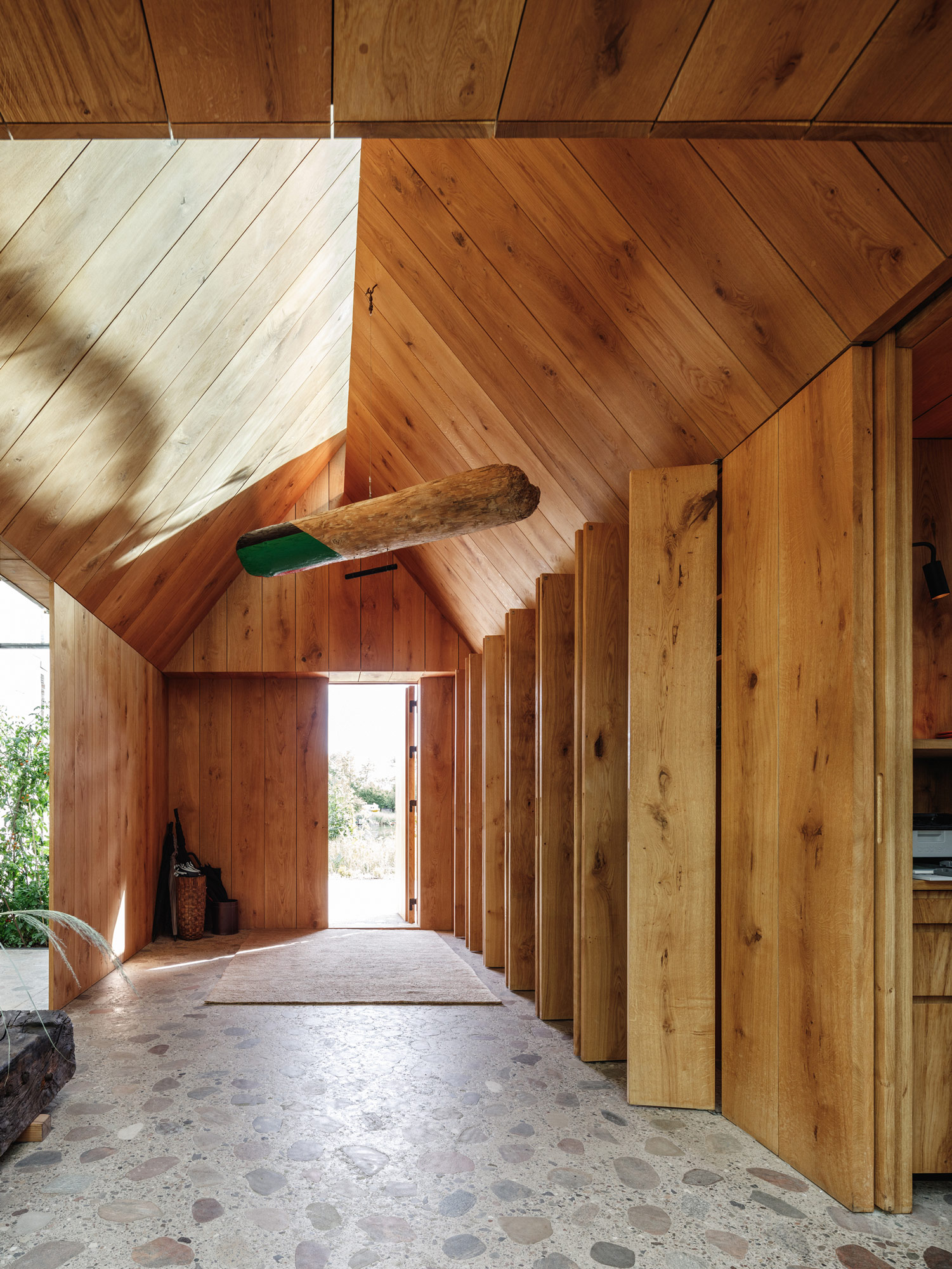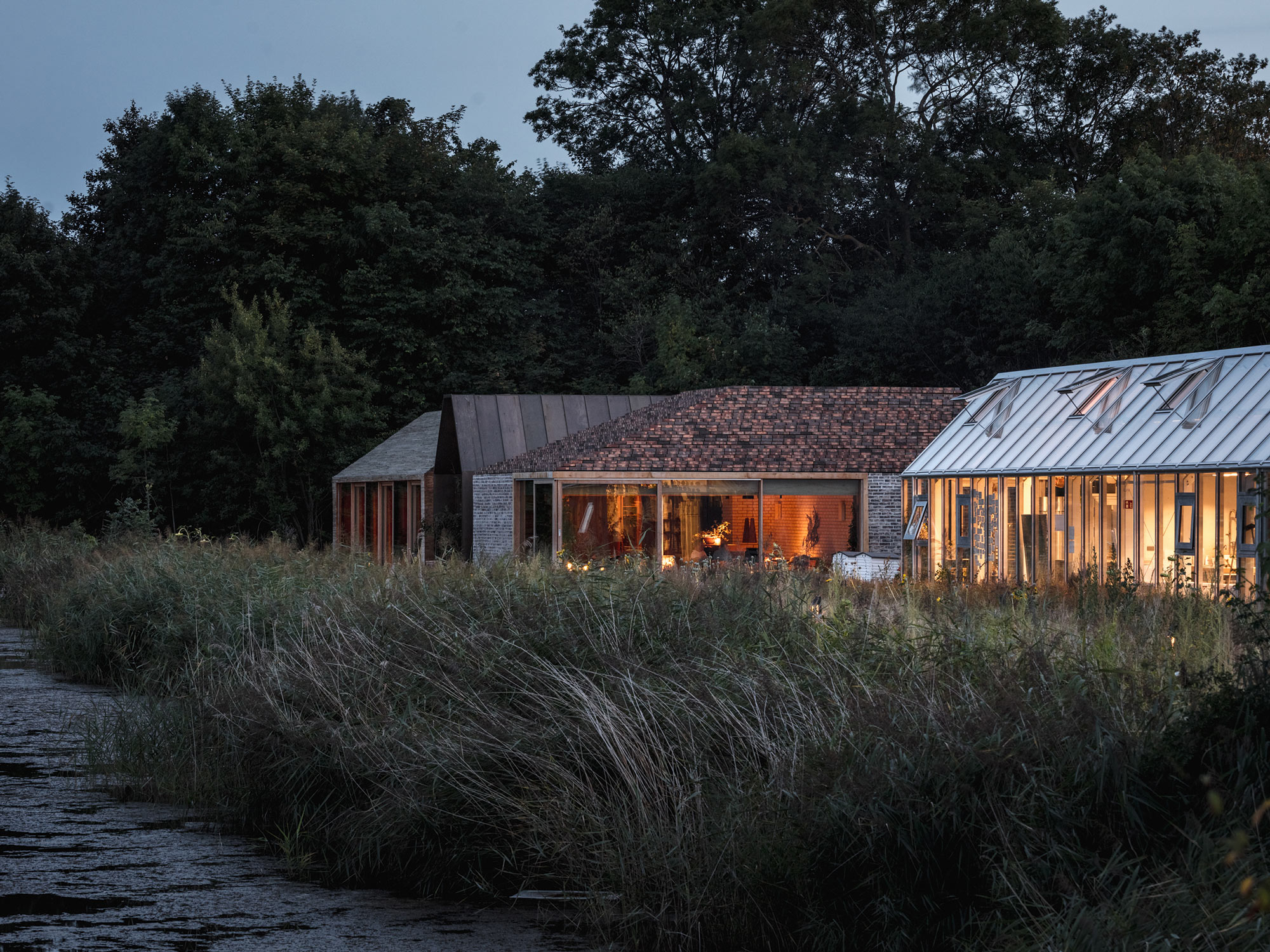Joan Billing & Samuel Eberli • 12.02.2019
NOMA 2.0 – The new «Slow Generation»
The rediscovery of the rural idyll in an urban context as a contrast to everyday digital life
The new NOMA in Copenhagen is more than just one of the world’s best restaurants with a trendy new concept. It’s the symbol of the development of a new generation; the «Slow Generation». Its mantra is sustainability, which this generation is confronting with greater awareness and a new way of dealing with themselves, their fellow human beings, cultural heritage, nature and resources. René Redzepi and his team of chefs, architects, interior decorators, designers, craftsmen, carpenters, glass-blowers and artists have achieved a further visionary milestone with the new NOMA 2.0. In addition to the culinary highlights, this time the century-old Nordic, traditional craftsmanship merges with architecture. It will take a bit of time to understand how unique it is. This is because NOMA is not only a restaurant, but also the start of a new awareness.
Survival manual of the Royal Army
Everything started in 2003 with the first NOMA, when René Redzepi and Claus Meyerin opened their restaurant in an old warehouse built in 1766 in Copenhagen. A survival manual from the Royal army was used as the basis and inspiration for their new cuisine, which meticulously demonstrated how to survive during times of war by using natural, regional products, unusual plants and herbs. This new approach to gastronomic culture developed Copenhagen into a secret recommendation and finally into a Mecca for a new culinary movement within a very short space of time. At the same time a new, young generation of chefs began to question the old-fashioned aesthetics of 1980s award-winning cuisine and its dishes using foie gras and lobster. Searching for a new identity, they found the answer in the type of cooking, which not only uses seasonal and local products, but also disseminates and protects cultural values. When NOMA was nominated the best restaurant in the world in 2010, this also increased the credibility of the movement at the same time.
From a child immigrant to a visionary
It’s undisputed that René Redzepi has definitely secured his place in the history of first-class cuisine. According to «Time Magazine», he is now one of the 100 most influential people in the world. This fairytale rise from a child immigrant to a celebrated visionary, to the creator of the identity of Nordic gastronomic culture and therefore to a revolutionary of international high-end gastronomy, was made possible through hard work, tenacity and talent. However, as the son of a Christian, Danish mother and a Muslim, Albanian-Macedonian father, he experienced distrust and racism on a daily basis. Born in Copenhagen in 1977, he grew up in humble circumstances. His father worked as a bus driver and his mother as a cleaner. After his training to become a chef with Pierre André in Copenhagen and years of working and travelling with various leading award-winning chefs worldwide, including with the inventor of molecular cuisine Ferran Adrià in «El Bulli», he returned to his homeland, where he opened his first restaurant, NOMA, in 2003. After years of success and many awards, he experienced the darker side of life in 2013. After eating mussels, 63 guests caught the Norovirus, he lost the title of «Best restaurant in the world» and his restaurant dropped out of the list of the top 50 best restaurants. What’s more, he was also not awarded the third Michelin star. However, in 2014 he rose like the phoenix from the ashes, and NOMA was again awarded the title of best restaurant in the world. In 2017 he decided to take a sabbatical for year to gather new ideas and develop the vision of the new NOMA 2.0. While doing this, he featured as a guest with his «NOMA creations» in Tokyo, Sydney, Tulum and on Yucatán.
Rural idyll of the «Hameau»
The top restaurateur René Redzepi has achieved another brilliant milestone with the new NOMA 2.0. The new, architectural basic concept of his restaurant reminds one of the rural idyll of a «Hameau» (hamlet) dating back to the Rococo period. In order withdraw from the stresses and strains of court life in Versailles from time to time, Marie-Antoinette owned a small-scale, idealised farm village, where rural life was romanticised with impressions of freedom and beauty. Everyday farm life was replicated, vegetable and flower beds were cultivated artificially and sheep and hens were kept. In the following period of Romanticism a life close to nature was propagated by Jean-Jacques Rousseau among others and became accessible to a wider audience. Even today our society again longs to be as close to nature as possible as a contrast to our everyday digital lives, and is therefore bringing it back to the everyday urban environment in the most absurd ways possible.
The restaurant covering 7,000 square metres
In 2018 René Redzepi opened the new NOMA 2.0 on the edge of Copenhagen, only two kilometres away from the old restaurant. The plot covering approximately 7,000 square metres with a former warehouse stands on an artificially created hill and has been part of the defence system of Copenhagen since the Middle Ages. Nature, the overgrown area with the facility that is rich in history, but is now run-down and covered in graffiti and the view to the Christiania hippy enclave and towards the sea, fascinated René Redzepi instantly and prompted him to implement his new concept of a NOMA village in a hameau-style.
The new village in Copenhagen
The conversion of the site into a real village was achieved in collaboration with the architect Bjarke Ingels. A team of excellent regional families who had been craftsmen for generations developed completely new furniture and interior decoration in the Nordic tradition. The concept of the new architecture was inspired by the traditional, Nordic collection of agricultural buildings. The individual components of a restaurant were dispersed and converted into eleven different sized buildings, which are connected to each other loosely in a way that resembles a village. The individual buildings house a bakery, a fermentation room, a kitchen for preparing food, a laboratory kitchen, a glazed outdoor test kitchen, where the new menus can be tinkered with, a dining room for staff, three greenhouses and a roof garden on the main building. The kitchen garden directly by the water and other fields form a type of culinary «Garden village». Through this Redzepi clearly shows that the new first-class chefs of today are also gardeners growing their own vegetables and herbs. He points out that farm-to-table as a mega trend can no longer be halted and is spreading throughout the world. Each of the «village buildings» has a different appearance depending on its purpose and is made from a wide variety of materials. Guests can enter each building freely and discover the various traditional Nordic materials and building techniques for themselves. The individual buildings are linked to each other via covered paths made of glass. Indoors and outdoors merge slickly into one and therefore become a central design element of the architecture and time guests spend in NOMA. The focus is on the experience of where and in which season one is eating. One of the highlights is the lounge, which consists of handmade tiled walls and a tiered roof and resembles a holiday home from the 1960s. Here guests can relax after eating by the fireplace surrounded by tailor-made furniture made by the interior designer for the «NOMA village», David Thulstrup.
The kitchen – the heartbeat
The heartbeat of the NOMA village is the service kitchen. The visionary concept envisages that the kitchen groups all the areas and buildings such as the reception, lounge, barbecue, wine cellar, restaurant and private event rooms around it. In contrast to traditional chrome steel kitchens, the kitchen islands are made of waxed oak, which the interior designer David Thulstrup developed with the Belgian kitchen specialist Maes Inox specifically for NOMA. The inspiration came to René Redzepi when he saw an open brick barbecue during the time he spent in Mexico. Guests therefore experience how the chefs implement the new culinary concept of NOMA from three «seasons». Each «season» last for three to four months and has a specific theme in each case. In the winter months, when the soil sleeps in Denmark, Redzepi and his team take guests through a fascinating underwater journey with a menu composed of fish and seafood. Completely new taste combinations such as sea urchin with rose oil or trout caviar with pumpkin seed oil are conjured up on the plates. In the summer, when the sun warms the soil up again, NOMA becomes a vegetarian Mecca and the «plant season» begins. At that time herbs, vegetables and fruit play the main roles. In October the «game season» begins and everything revolves around culinary treasures such as mushrooms, wild fruit and game. Naturally fermented wines or cool tea liquor made of Arctic thyme accompany the dishes. The crockery and glasses are also a highlight: Five traditional, regional ceramic artists and a glass-blower have developed the range for every seasonal menu.
Between ingenuity and poetry
Anyone who is not spending any time in Copenhagen in the near future, is warmly recommended to look at the book by René Redzepi «NOMA – Time and Place in Nordic Cuisine», which was published by Phaidon in 2010. In it we are enchanted by the Nordic world with its myths, nature and its cuisine. There are wonderful text extracts from René Redzepi’s diary, the beginnings of the vision of Nordic cuisine or his thoughts before the opening of his first restaurant. The photographs by Ditte Isager also allow the observer to enter into this contemplative world. The book is like NOMA itself: It’s about more than food, feelings and honesty, collaboration, it’s about life, philosophising, enjoying, cultivating and nurturing. The documentary «NOMA – a view behind the curtains of the best restaurant in the world» by the French director Pierre Deschamps also shows this utopian world. He accompanies René Redzepi on his unusual journey from success, decline and rediscovery for three years, which moves between ingenuity, poetry and passion like an artist’s portrait from the last century.
Without NOMA and René Redzepi, Nordic cuisine would not be where it is today. The radical limitation to regional products, purism on a plate, the type of collaboration, the familiar team spirit, the atmosphere in the rooms, the special way of hosting guests, all this has inspired and characterised a whole generation of young chefs throughout the world. Although René Redzepi was initially laughed at as a «seal fisherman», he pursued his visionary path unflinchingly and in doing so reached a world-class level. No wonder that the new generation is cultivating this conscious slowing-down and the new awareness of life – and will soon meet with approval worldwide.
Photography: Rasmus Hjortshøj, Architecture: Bjarke Ingels, INTERIOR: Design David Thulstrup
